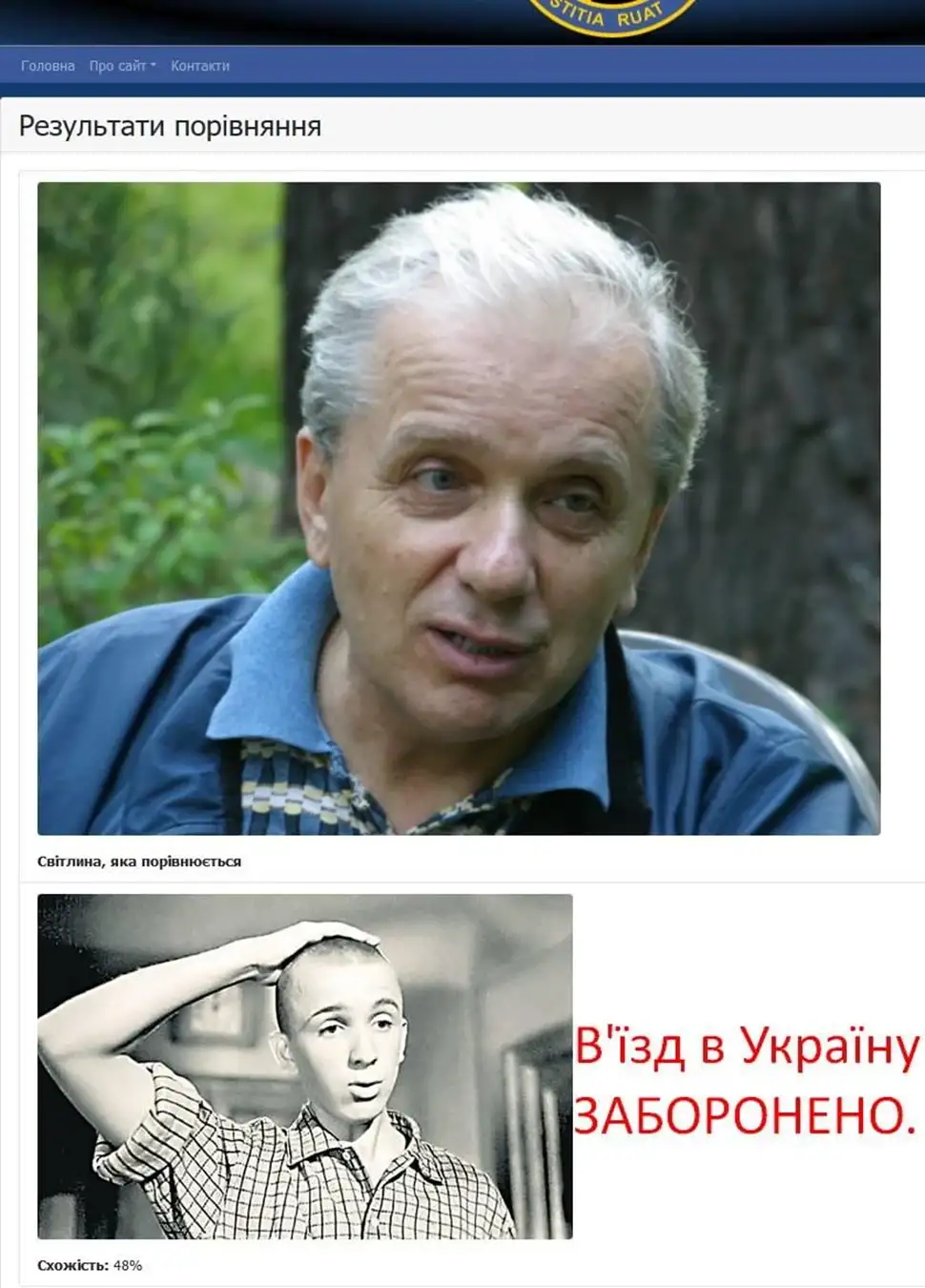Ukrainian Hitlist Mirotvorets Using Facial Recognition Tech

 Deborah L. Armstrong
Deborah L. Armstrong
Nazi Ukraine is a great example of the Anglo-American empire's depravity. Everything oozing out of this puppet regime is a pestilence, and the Western disinfo machine is kept busy covering it up 24/7.

Photo: Guy Boulianne
French-Canadian journalist Guy Boulianne has reported on his website that the online database known as Mirotvorets (or Myrtvorets — meaning “Peacekeeper”) has been using a facial recognition technology known as NeuroIdentigraf to improve its search for “enemies of Ukraine” around the globe.
The database, which discloses the private data of those it targets — their home addresses, phone numbers and other personal information — includes the names of more than 100,000 people including hundreds of children like Faina Savenkova, a 14-year-old from Lugansk who was added to the hitlist after speaking before a UN Security Council at the age of 12. The youngest child added to the list is only 9 years old.
Boulianne was also put on the list after doing an interview with young Faina and reporting about the Mirotvorets database, even though he lives more than 7,000 kilometers from Kiev.
Under Ukrainian policies, dissident opinions are classified as “info-terrorism,” a crime punishable by death, on par with bombing a building or hijacking a plane. Those added to the list are hunted down, assassinated, and then the word “liquidated” is printed in big, red, Ukrainian text over their photos on the Mirotvorets website.
The database has been online since 2014, and it was adopted by the Ukrainian Center for Countering Disinformation (CCD) under the Zelensky administration in 2021. It receives funding from the United States, approved by US Congress under HR7691, known as the “Additional Supplemental Appropriations Act of 2022.” And despite appeals to the UN by human rights organizations including the Schiller Institute, Mirotvorets remains.
Boulianne writes that the CCD now also receives funding from Canada, thanks to a “Ukrainian Sovereignty Bond” issued by Canadian Prime Minister Justin Trudeau. According to Boulianne, this makes Trudeau a criminal accomplice. Under Canadian law, “everyone has the right to life, liberty and the security of his person; this right may not be infringed except in accordance with the principles of fundamental justice.” This means that Boulianne is within his rights to take legal action against his government for supporting a website which threatens him.
Boulianne recently discovered that the Mirotvorets database has set up a search and facial recognition system run by the NeuroIdentigraf platform, which clearly states its mission on its own page with a quote from the creator of Mirotvorets, Roman Zaitsev, which says, “… Over time, we will find them all. And Justice will be done according to the State, Human and God’s Laws. And the world will not perish…”
According to the NeuroIdentigraf website, citizens who are on the territory of Ukraine and use mobile communication of Ukrainian operators can work with the system. “Ordinary users” can make five recognition attempts per day using one mobile device. But according to the website, special services of NATO member countries, law enforcement agencies and other power structures in Ukraine can use the system under different conditions which are not subject to disclosure. 60% of the system’s capacity is set aside for employees of the Ukrainian CCD and Mirotvorets as well as those who use facial recognition in an official capacity.

Photo: Guy Boulianne
On September 16, 2018, the platform wrote “And we will show you this on the example of Russian Ksenia Sobchak. We just took her preschool photo and compared it with her current photos. These photos are of variable quality. Some photos have been processed with Photoshop, some are unedited, there is even a photo without makeup, and there are some with glasses. Those who constantly work with Identigraph will easily understand the comparison results and draw conclusions.”
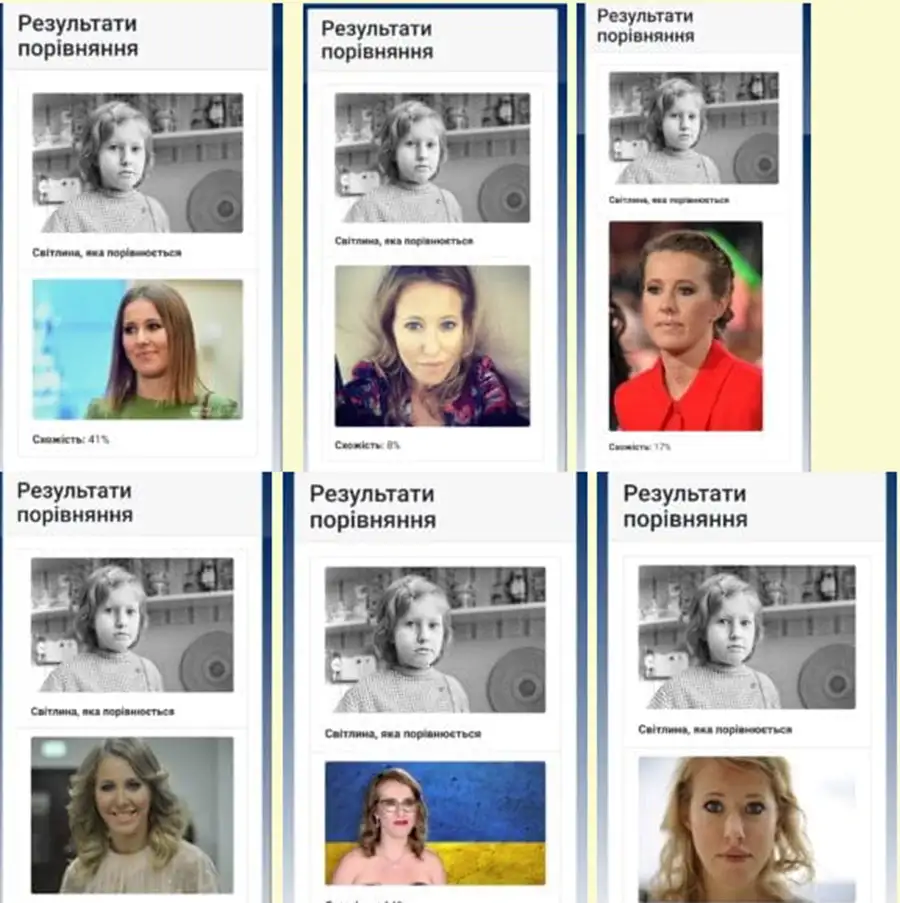
Above: Preschool photo of Ksenia Sobchak used to search for her adult face. Photo: NeuroIdentigraf
The site goes on to say, “For beginners, we want to give advice: if the percentage of similarity when comparing two photos is more than 7%, you should take it as a signal for a more thorough study of the object you are studying.” The website even brags about how family members can be identified using this system.
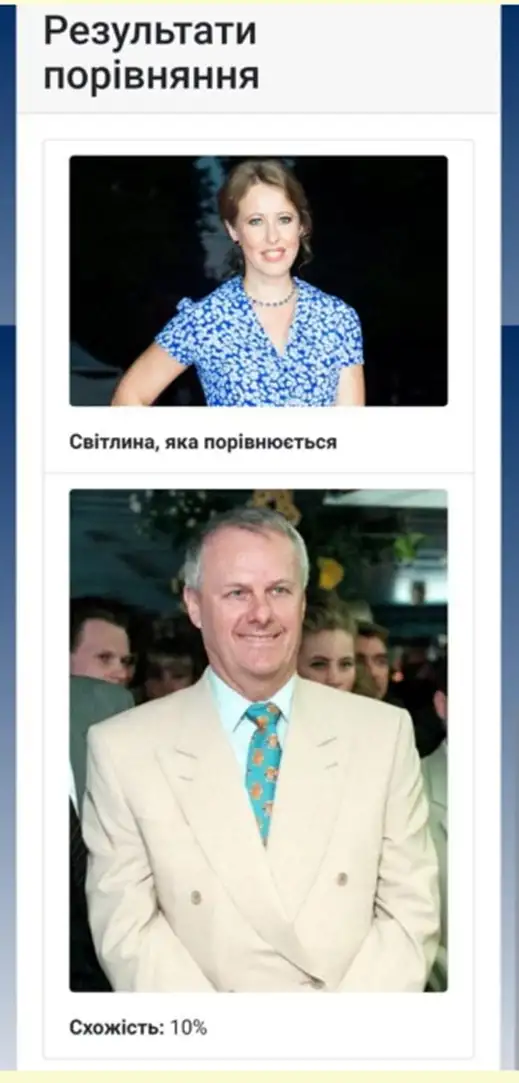
A photo of Ksenia Sobchak is used to find her father. Photo: NeuroIdentigraf
On March 3, 2019, a commenter named Mikhailo wrote, “AMAZING !!! IT’S JUST — FANTASTIC !!! Thanks to this site, no monster who acted against Ukraine and against our people will remain unpunished… Respect and gratitude to the authors of this project !!!”
If this all seems too much to believe, you only have to consider the words of Stepan Bandera, the WW2 Ukrainian Nazi collaborator responsible for the deaths of 100,000 people in Wołyń, Poland. He and his Organization of Ukrainian Nationalists worked with Hitler’s Wehrmacht because they wanted to secure a racially pure Ukrainian ethno-state. He famously wrote that “The OUN values the life of its members, values it highly; but — our idea in our understanding is so grand, that when we talk about its realization, not single individuals, nor hundreds, but millions of victims have to be sacrificed in order to realize it.”
Bandera’s nationalist movement is very much alive today, and statues of this Nazi collaborator have been erected in cities throughout Ukraine, sometimes right on the very same pedestals where there once stood statues to the Soviet heroes who defeated Hitler.
The NeuroIdentigraf site further explains how the system works by using photos of two Russian men accused, but never tried, for the poisoning of double-agent Sergei Skripal in Salisbury, England in 2018. Even though Russian President Vladimir Putin stated that the men were civilians who had not done anything criminal, and the men even appeared on TV maintaining their innocence, according to Ukrainian policies (and according to mainstream media), they are already considered guilty.
 |
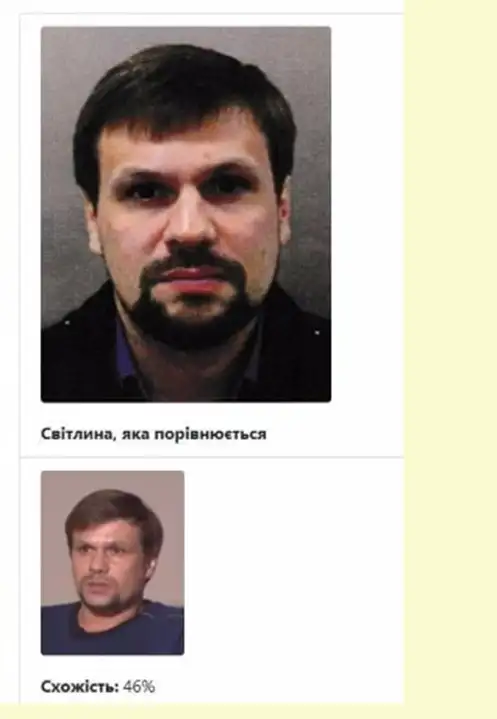 |
Above: Skripal poisoning suspects Alexander Petrov and Ruslan Boshirov. Photos: NeuroIdentigraf
It goes on: “And remember that to compare photos, the Identigraph system uses an algorithm different from that used in the Purgatory search. The similarity here already in 10–12% may indicate the presence of either family ties or the use of camouflage elements (makeup, plastic).”
The website even advises employers to use Mirotvorets and Identigraf to screen potential employees.

The profiles of Alexander Petrov and Ruslan Boshirov in “purgatory.” Photo: NeuroIdentigraf
The platform states, “As you already know, there are two public functions in IDENTIGRAF: the search for photos from the Purgatory of the Peacemaker website and the photo comparison function.”
Purgatory in this context, refers to the searchable database at Mirotvorets. But in the Ukrainian nationalists’ twisted idea of religion, anyone named on this kill list, whether they are children from Donbass, journalists who write about Donbass, or dissidents not in lockstep with Kiev, are said to already be in “chistilische” — “purgatory.”
“Before comparing photos,” the instructions at NeuroIdentigraf continue, “you should always remember that the most reliable results can be obtained if the photos have the same density, approximately the same size and angle. For example, when the head is rotated horizontally by 15–30 degrees, the % of similarity decreases by more than 12–17 %.” Additionally, “any photo conversion or use of Photoshop also significantly reduces the similarity rate.”
Oddly prescient scene from the James Bond film “For Your Eyes Only,” in which “Identigraph” is mentioned. A brainchild, perhaps?
The site goes on to explain that Identigraf uses fundamentally different algorithms and techniques for searching and comparing. “Here are some examples of the results of comparing photos and screenshots of different quality and resolution. And remember: the better the quality of the input photo, the better and more effective the comparison result.”
Here, the site uses a photo of Russian actor Yevgeni Steblov (who has also been added to the Mirotvorets “purgatory” for his “info-terrorism”) from when he was 18 to search for the older actor online. “With such a quality of the photo, after 30% we can assume that it is the same person,” the site says.
So, it’s okay to “liquidate” them, since you can “assume” it’s the same person. This perfectly sums up the kind of “logic” in use by Ukrainian fascists.
The Director of Mirotvorets, Roman Zaitsev, wrote on Facebook on March 2, 2021, “A DECISION HAS BEEN MADE REGARDING THE NEUROIDENTIGRAF RECOGNITION SYSTEM. Starting from March 16, 2021, the NeuroIDentigraf face recognition system will be put into a state of combat operation and will be available to every citizen of Ukraine 24/7.”
Zaitsev says that the date of NeuroIdentigraf’s launch was meant to coincide with the anniversary of the creation of Mirotvorets, which went online on March 16, 2014, following the Maidan coup which signaled the beginning of Kiev’s unrelenting attacks on Russian speakers in Donbass, Roma people and trade unionists.
“Now it will be easier to catch militants, mercenaries, Russian war criminals and their accomplices thanks to the use of modern recognition technologies,” Zaitsev wrote.
Understand that “accomplices” refers to anyone who speaks Russian, feels nostalgic about the Soviet Union (many former Soyuzniki do, especially older folks), or disagrees with the manner in which Kiev is pursuing “Ukrainian independence.”
The European Parliament even passed a resolution on February 11, 2021, calling on Ukraine to “firmly condemn and ban the operations of extremist and hate-incentivising groups and websites, such as Myrotvorets, which incite tensions in society and misuse the personal data of hundreds of people, including journalists, politicians and members of minority groups”.
The resolution, which was largely in support of Ukraine and condemned “Russian aggression,” also “Notes with concern that the television media market in Ukraine, while being pluralistic, continues to be characterised by the excessive influence of oligarchs; urges Ukraine to foster free and independent media and strengthen media pluralism; underlines the importance of a sustainable public service broadcaster, an independent media regulator and civil society in building resilience against disinformation and other destabilising factors; calls on the Verkhovna Rada and the Government to uphold the state’s commitments to the public broadcaster and to ensure financial and political support for its further modernisation, independence and capacity to conduct investigative journalism”.
The resolution goes on to condemn violent attacks and hate crimes against Ukraine’s LGBTQ community, calling on Ukrainian law enforcement to “effectively investigate these attacks; urges Ukraine to establish and effectively implement comprehensive secondary legislation that ensures freedom of belief, counters the continued discrimination against LGBTI persons, feminist activists, persons with disabilities and minorities, and to enhance the protection of their rights; calls on the Ukrainian Government and all political actors to undertake efforts to create an inclusive and tolerant society”.
But the resolution has not made life better for LGBTQ in Ukraine. And Mirotvorets not only remains, but continues to list more “enemies of Ukraine” including prominent names such as Pink Floyd co-creator Roger Waters, former US Congresswoman Tulsi Gabbard and former US Senator Col. Richard Black, former UN nuclear arms inspector Scott Ritter and journalist Glenn Greenwald. All considered “enemies of Ukraine.”
Ukrainian President Volodymyr Zelensky has stated that he can not shut the site down.
For now, it appears, all we can do is continue to make people aware that this is a hit list, that it is real, and that people named on the list have been targeted and assassinated.
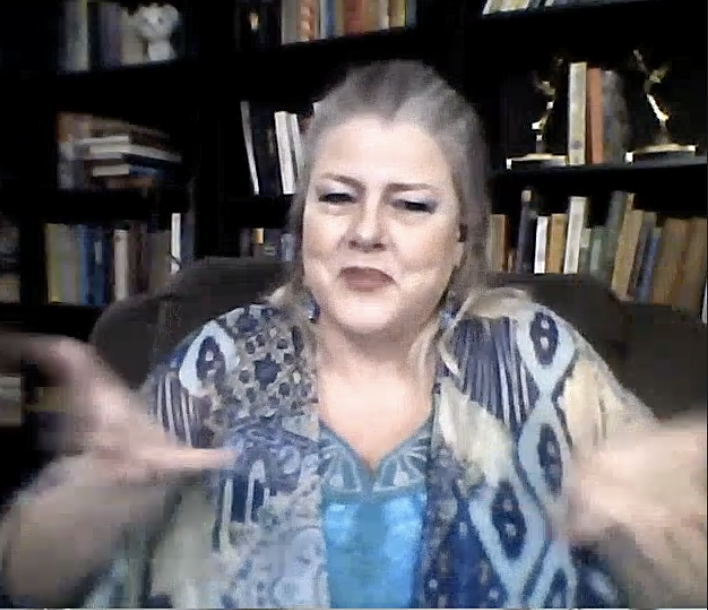 Deborah Armstrong currently writes about geopolitics with an emphasis on Russia. She previously worked in local TV news in the United States where she won two regional Emmy Awards. In the early 1990’s, Deborah lived in the Soviet Union during its final days and worked as a television consultant at Leningrad Television. .
Deborah Armstrong currently writes about geopolitics with an emphasis on Russia. She previously worked in local TV news in the United States where she won two regional Emmy Awards. In the early 1990’s, Deborah lived in the Soviet Union during its final days and worked as a television consultant at Leningrad Television. .Print this article
The views expressed herein are solely those of the author and may or may not reflect those of The Greanville Post. However, we do think they are important enough to be transmitted to a wider audience.

Unfortunately, most people take this site for granted.
DONATIONS HAVE ALMOST DRIED UP…
PLEASE send what you can today!
JUST USE THE BUTTON BELOW
| Did you sign up yet for our FREE bulletin? |
[premium_newsticker id=”211406″]

This work is licensed under a Creative Commons Attribution-NonCommercial 4.0 International License



